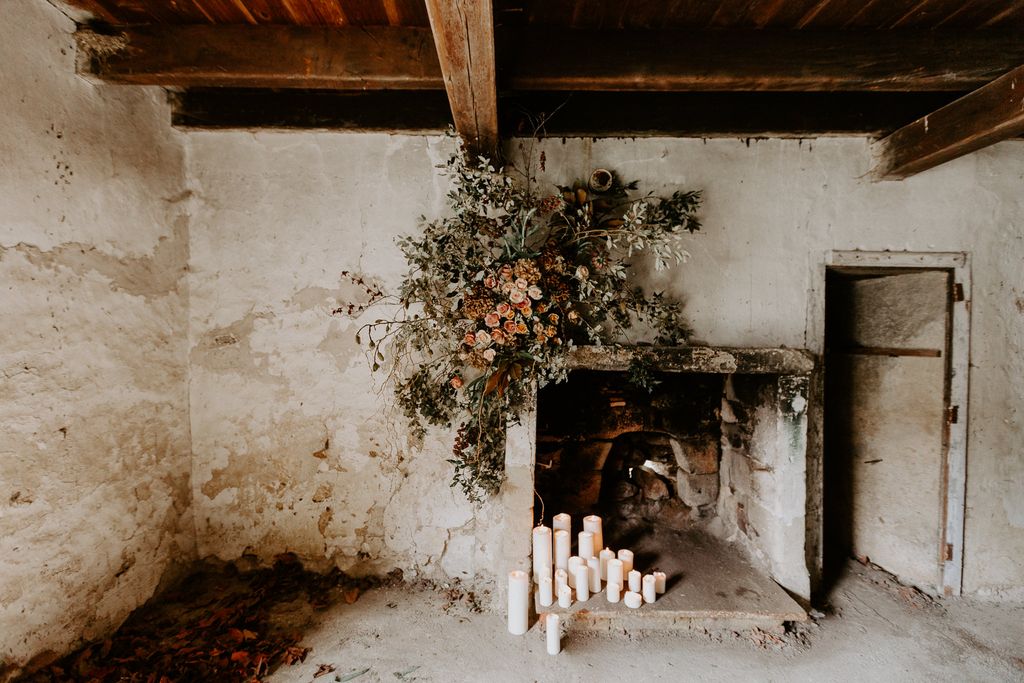
Flowers and eco-consciousness? Not so simple…
When I chose this job, I asked myself many questions.
Can you deeply love flowers and nature, and in the meantime accept the carbon and social footprint due to the production of flowers and their by-products?
I am one of those who think that every act counts, even the little ones.
Atelier Aimer has always had an eco-conscious approach, through various aspects.
No stock = no loss
I chose to open a studio rather than a shop mostly because I can simply not accept the idea to buy flowers while knowing a big part of them will end up in the trash!
Yet this is how most shop work. Indeed for a shop to be attractive, it has to be filled with fresh flowers and regularly restocked, which implies a high loss rate. I was discussing recently with a florist friend who worked for many prestigious shops: she confessed that it was very common to trash flower bunches that had not even been opened since their purchase…
In the studio, my process is very different because I work just-in-time. I only buy the quantities I need, and in case I have leftovers, I dry them, I give them away or as a last resort I compost them.
Zero waste
I have a zero waste approach not only for flowers, but also with the techniques I use.
During floristry training, we’re not so informed about these questions, and we are taugh to work using floral foam without alternative.
What is floral foam?
You all probably received one day a floral arrangement using floral foam. You know, this spongy green cube?
This material has of course a lot of benefits for florists: it is quite cheap, it can absorb a huge amount of water (and so ensure an extended hydration for flowers), while being an easy base material for arrangements.
Floral foam is a kind of plastic, derived from petrochemicals. It is NOT biodegradable. The foam tends to fall apart in small pieces, some are visible to the eye, some are not. No scientific studies have been published to demonstrate the ecological impact of floral foam on land or in the marine environnement. But it is safe to say that every time a particle of foam is disposed of down the drain or sink, it is adding to the horrific problem we are facing with plastic pollution in the world’s oceans.
And yet, there are alternatives. Designing foam-free is not more expensive or more complicated. It only implies to think designs in that way from the beginning.
All my designs use reusable structures. Truth is I actually think this is one of the funniest part of my job! I love to imagine mechanics and techniques in order to integrate and hide reusable containers.
I am proud to say that all my creations, small and big, are 100% foam-free.
To know more: if you’re interested by this subject, I’d highly recommend to follow @nofloralfoam on Instagram. They show and promote the work of many florists all over the world that chose to work foam-free, and provide technical informations, advices and how-to…
Reduce wastes
There are also many little daily actions that allow me to reduce my wastes to minimum.
– selective sorting: greens, cardboard, plastic wraps… even when I’m in the rush of preparing a wedding, I always take the time to sort my wastes, and I compost my green waste.
– wrappings: I use only natural Kraft paper, never any plastics.
Etc…
Chosing flowers
Here’s another big topic…
I only work with seasonal flowers, and I try to use as many local blooms as possible. It is not so easy, because the offer in Nantes is quite small. Most of the Flowers I have access to come from Holland, Ecuador, Kenya…
So I’m juggling and improvising! I mix flowers I buy with locally foraged blooms, I also use a lot of dried elements in my arrangements : it’s a good trick to cheat with the seasons. On average, in all seasons I use at least 60% of local flowers.
I am very honored to be part of the Collectif de la Fleur Française, which supports the culture of local and seasonal French Flowers. The association is inspired by the ‘Slow Flower movement’, a revolution started in the US in the mid 2000 and which has spread globally since then. Its name is a tribute to the Slow Food movement, which militates for a responsible agriculture.
I hope I will soon have more choices to enlarge the range of local blooms at my disposal. A little bird told me that it’s on the way, some pretty nice projects are coming up… to be continued 😉
EDIT march 2020 : if you’re interested in this topic, I wrote a new article about eco-responsibility here.
Credits: some of the information from this article come from @nofloralfoam and Collectif de la Fleur Française



